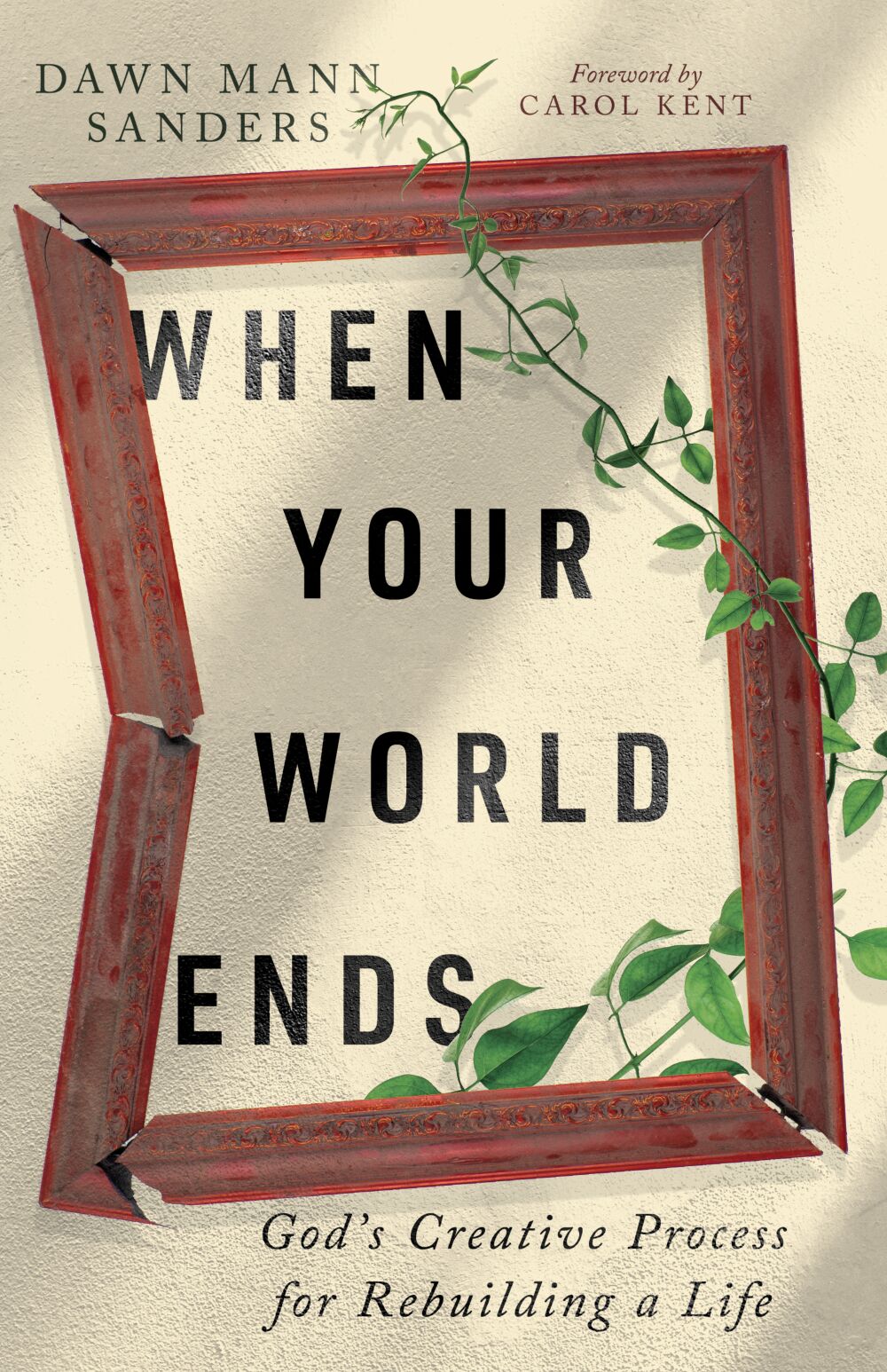Have you ever hit a pothole while driving? For those of you unfamiliar with the term, potholes are holes in a road generally caused by water expanding and contracting under the road’s pavement due to varying weather conditions throughout the year. When it’s cold, water freezes and contracts. When it’s warm, water melts and expands. The stress of these opposing forces weakens and cracks the pavement causing potholes.
Since the Metro DC area experiences all four seasons, potholes are a way of life here. Needless to say, I have hit my fair share.
To be fair to the local government, most are repaired fairly quickly—before they get too big. So, usually, potholes are simply bumps on the road of life in this area. Every once in a while though, there can be a really large pothole. Then, if you aren’t careful, …
you’re driving too fast or too close, …
you aren’t looking, …
you weren’t expecting to encounter a pothole, …
or you did, just not one that big, …
you can get knocked off course—and not even know it at first. That’s what happened to me.
Drifting Off Course
While out driving, I hit a really nasty pothole. I can’t remember why I didn’t see it, but I didn’t. Consequently, I was traveling pretty fast when it seemed to appear out of nowhere. I didn’t have time to swerve and wound up hitting it pretty hard—hard enough to lift me up out of my seat, but not hard enough to cause any damage. Or so, I thought.
I seemed fine. The car seemed fine too—at least at first. After a while though, I started to notice that I had to grip the wheel to stay on course. If I took my hands of the wheel for even a moment, my car would drift off to the right. That’s when I realized hitting that pothole knocked my car’s steering out of alignment.
Catastrophic events are like potholes. Most are unexpected, seem to come out of nowhere, and can knock you off course if you aren’t careful.
Catastrophic events are like potholes. Most are unexpected, seem to come out of nowhere, and can knock you off course if you aren’t careful.
An Article & a Series
Last week, I started an article on choosing wisely, the first one in a series on making decisions regarding creating our new lives. The article begins a deep dive into Genesis 2:15-17 using food choices as a metaphor for life choices. In other words, the directions God gave Adam to choose the food that made up his diet contain guidelines we can use in choosing the activities that makeup our lives.
Then the Lord God took the man and put him in the garden of Eden to tend and keep it. And the Lord God commanded the man, saying, "Of every tree of the garden you may freely eat; but of the tree of the knowledge of good and evil you shall not eat, for in the day that you eat of it you shall surely die." ~ Genesis 2:15-17
From the Scripture above, we see the first food God provided came from trees. Trees, like other plants, differ from other living organisms in three ways. Trees:
- Grow in a specific location, are immobile;
- Are sustained by their roots; and
- Get their energy from sunlight.
Part 1 of this article began to unpack these differences with a deep dive into number 1: Grow in a specific location. Today’s post continues that discussion with a deep dive into number 2: Trees are sustained by their roots.
Creating a new life begins with a desire, but making your desire a reality takes action—many actions taken over time. This article answers the question: “What do I do to sustain my new life?” Share on XRoots sustain trees in three ways. Roots:
- Anchor trees to the ground,
- Absorb nutrients, and
- Store food.
Anchor
The first way roots sustain trees is by anchoring them to the ground, which keeps them from drifting away like my car after it hit the pothole. The anchoring the roots provide also supports trees and keeps them from falling.
Imagine a strong wind coursing through a tree. Now, imagine the strength required to keep it upright. This is the kind of power roots have to support trees. When creating our new lives, we are to provide that kind of support to our lives too.
The first guideline we extracted from Genesis 2:15-17 was: We are to choose activities that align with our assignments. When applying that roots function as anchors supporting trees to choosing activities for our lives, we learn that we are to choose activities that connect both directly and indirectly to our assignments. Activities that connect directly to an assignment are a part of the assignment; whereas, activities that connect indirectly to an assignment support the assignment.
Supportive activities are necessary to sustain the core activities.
Now, Adam’s assignment was to tend and keep the Garden of Eden. Activities that connect directly to tending and keeping the Garden might be sowing seeds and plowing fields. And activities that connect indirectly might be keeping your strength up by eating and sleeping.
As you can see, indirect activities are not part of the activity, but without them, the direct activities can’t be done well. We are called to do all things well (Colossians 3:23). Therefore, supportive activities are necessary to sustain the core activities.
Guideline #2: Choose activities that support our assignments.
Absorption
The second way roots sustain trees is by absorbing nutrients from the surrounding soil. Nutrients are substances an organism can’t make or can’t make in sufficient quantities that the organism needs to live, grow, and stay healthy. Thus, absorbing nutrients is a way roots provide trees with what they need to live, grow, and stay healthy. Also, absorbing nutrients allow the trees to produce the most nutritious fruit—the best fruit for Adam and Eve or us to eat.
So, when building our new lives, we aren’t just to choose activities that align and support our assignments. When presented with options, we’re to choose the option that provides what we—our lives and assignments—need to live, grow, and stay healthy so that we can produce the best fruit.
Basically, it’s a needs-versus-wants thing. There are things related to your assignment that you want to do and there are things related to your assignment that you need to do. As with food, we can’t thrive—or even survive—just eating what we want. For optimum health and growth, we have to balance what we want with what we need. Similarly, when it comes to creating our new lives, we have to do the same. When it comes to completing our assignments, we have to balance the things we want to do with the things we need to do.
Guideline #3: Choose activities that provide what our lives and assignments need to live, grow, and stay healthy so that we can produce the best fruit.
Guideline #3a: Choose activities that balance the things related to our assignments that we want to do with the things related to our assignments that we need to do.
Storage
The third way roots sustain trees is by storing excess food. This is especially true for deciduous trees because deciduous trees need enough stored food to carry them through winters, droughts, and other environmental extremes.
Environmental extremes are seasons of low or no activity and resources. In our lives and our assignments, there will be seasons of low or no activity and resources. Often, as is the case with trees, low or no activity produces low or no resources. As a result, we need to prepare the way trees do by storing excess resources for seasons of lack and scarcity.
Guideline #4: During seasons of plenty, choose activities that prepare for seasons of scarcity—activities that storing excess resources.
To be continued…
Questions:
- How have the potholes on life’s journey impacted your life?
- What activities support your assignment? What activities are part of your assignment?
- How do/will you balance needs versus wants?
COMPLETE LIST OF GUIDELINES
Guideline #1: Choose activities that align with our assignments.
Guideline #1a: The availability of activities that align with our new lives depends on the level of effort we put into completing our assignments.
Guideline #2: Choose activities that support our assignments.
Guideline #3: Choose activities that provide what our lives and assignments need to live, grow, and stay healthy so that we can produce the best fruit.
Guideline #3a: Choose activities that balance the things related to our assignments that we want to do with the things related to our assignments that we need to do.
Guideline #4: During seasons of plenty, choose activities that for seasons of scarcity by storing excess resources.
The “Choosing Wisely” Series:
- Part 1a – Choosing Wisely
- Part 1b – Getting to the Root
- Part 1c – Fueling Your New Life
- Part 2 – A Habitat for Humanity
- Part 3 – The Order of Rest
- Part 4 – The Right Conditions for Rest
- Part 5 – What’s the Best Decision-Making Process for Creating New Lives?
- Part 6 – Five Freedoms When Creating a New Life
- Part 7 – The Risks of Giving Into Temptation
- Part 8 – How Knowledge Plays in Decision Making
- Part 9 – How Morality Applies to Decision Making
- Part 10 – Biblical Concepts of Time When Making Decisions
- Part 11 – Some Certainties We Have in This Life
- Part 12 – How Will Your Relationship End?







